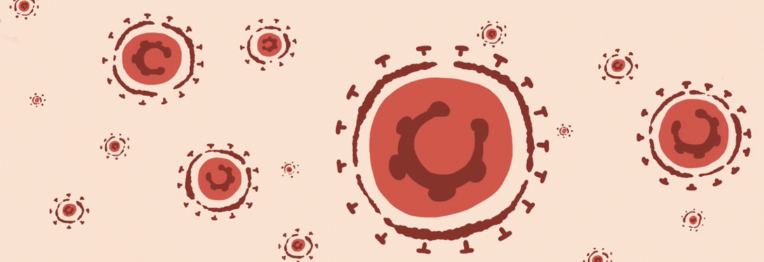
Basics of HIV
The Human Immunodeficiency Virus (HIV) is a virus that attacks the immune system, or the part of your body that works to keep you healthy by fighting off infections. HIV can lead to Acquired Immunodeficiency Syndrome (AIDS) over time. Without treatment, the virus gradually destroys the body’s defenses against disease. Without these defenses, the body becomes vulnerable to many infections and cancers that do not normally develop in someone with a healthy immune system.
HIV spreads through direct contact with four bodily fluids from an infected person: blood (including menstrual blood), semen (including both pre–cum and cum/ejaculate), vaginal fluids, and breast milk. “Direct contact” means that one of these four HIV–infected fluids must come into contact with a person’s bloodstream. HIV can enter the body in several ways. It can go through open cuts or sores on the skin. It can also enter through mucous membranes. These membranes include the eyes, mouth, digestive tract or “gut”, head of the penis, vagina, and anus.
For example, a person could be exposed to HIV during sex. Or through direct blood contact like sharing injection drug needles or “works” (cotton, cookers, etc.). Or transfusions with HIV-infected blood. HIV can also be transmitted from mother to child. This may happen before birth, during birth, or through breastfeeding. Skin–to–skin contact with an infected individual cannot transmit HIV. Other bodily fluids such as saliva, tears, sweat, feces, or urine do not contain HIV. They cannot transmit the virus. Because of this, oral sex is much less risky for HIV transmission than anal or vaginal sex. HIV could still enter the bloodstream through open cuts and sores in the mouth or through the gums or tonsils. But, once it moves past the mouth, enzymes in the esophagus and acid in the stomach kill the virus.
HIV can cause symptoms within weeks of infection. But, these symptoms generally go away in a few days to weeks. People can also live with HIV for years with no symptoms at all. HIV is highly infectious during the first few weeks after infection. This is when the virus is multiplying rapidly, even if someone doesn’t have symptoms. It is still possible to transmit HIV when someone does not have symptoms. Early symptoms can last from a few days to a few weeks. Symptoms can include: fever, fatigue, a non-itchy rash, swollen glands or lymph nodes, muscle aches, sore throat, night sweats, and mouth sores. We refer to any combination of these symptoms as Acute Retroviral Syndrome. You can still detect HIV even if someone has no symptoms. This is why regular testing is important, especially for those who are sexually active or have other potential exposures to HIV.
After the acute phase, the virus usually becomes less active. Sometimes it can take up to 10 years for health problems to start again. However, some people may rapidly develop severe health problems associated with AIDS.
AIDS is a late stage of HIV infection, characterized by serious damage to the body’s immune system. By the time a person is diagnosed with AIDS, they likely have already faced serious infections or cancers. This happens because their body cannot mount an effective defense.
Antiretroviral medications can slow down HIV. They also help protect the immune system from getting weaker. Many people living with HIV may never develop AIDS because of today’s medical treatments. They can often live a normal lifespan. Research shows that beginning antiretroviral treatment soon after an HIV diagnosis can significantly improve long-term health.
There is no cure for HIV or AIDS. No medication has been able to remove the virus from the body or fix the harm HIV causes to the immune system. A number of investigators are working on developing a cure. However, there have been huge advances in HIV treatment and prevention in recent years. We now have tools to prevent infection and help those who are infected stay healthy for years.
One tool is using HIV PrEP or Pre-Exposure Prophylaxis (PrEP). PrEP to prevent HIV means HIV negative people take anti-HIV drugs to prevent HIV. The concept of a prophylaxis is common in health care. Both birth control and malaria pills are prophylaxis. They require taking a drug to prevent disease. Current FDA-approved PrEP can be a daily oral pill (Truvada® or Descovy®) or a long-acting injection (Apretude®).
Another too is U=U. People living with HIV who take effective antiretroviral therapy (ART) can achieve an undetectable viral load. When a person still has the virus in their body, but the levels are “undetectable”, they cannot transmit the virus to others through sexual contact. We refer to this prevention strategy as “Undetectable = Untransmittable” or U=U.
Some people can naturally suppress the virus without needing to use antiretroviral medication. These people are rare, but they have inspired studies to develop new ways to prevent HIV, like the AMP Study. At BridgeHIV, we focus our research on HIV prevention. We test new products like vaccines and pre-exposure prophylaxis (PrEP) studying how safe they are and if they can prevent HIV infection.



